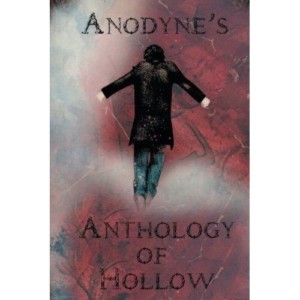 Title: Anodyne’s Anthology of Hollow Subtitle: The Rise of Anodyne
Title: Anodyne’s Anthology of Hollow Subtitle: The Rise of Anodyne
Author: Banickker
Publisher: XlibrisNZ
ISBN: 9781514466216
Pages: 108
Genres: Fantasy
Reviewed by: Dave Bishop
Pacific Book Review Star
Awarded to Books of Excellent Merit

While most fantasy novels rely on elements such as fictional universes, magic, supernatural beings, horror, mayhem, and more, they all turn on the axel of imagination. Imagination is in no short supply in this book by the author who simply goes by the one-word moniker, Banickker. At the end of this tale, he tells his readers that virtually all of his fiction stems from his own nightmares; in one way or another. Having arrived at the last page, you are likely to believe him.
Anodyne’s Anthology of Hollow is a confession of sorts. Most of it is Anodyne’s declaration of what he has done, what he enjoys doing, and what he will most likely continue to do. You see Anodyne is a god. Not the God—the one that most popular religions would have you believe in. Rather, Anodyne is a bit of a god of his own making who has created a place (or planet) called Hollow that lies somewhere “in the black of space.” Here, Anodyne continually drops in humans that he has kidnapped from Earth because even though he’s a god, he can’t seem to create intelligent life. He can, however, certainly play hell with it as he does from one end of Hollow to the other. Infinitely larger than humans and with extraordinary powers far beyond anything people can muster, Anodyne flits about appearing and disappearing, killing, crushing, maiming, and dismembering mere mortals as he playfully oversees their vain attempts at survival. He’s helped in his endeavors by the Conductor—a one-time human that Anodyne has turned into his own angel.
The plot consists mainly of humans trying to outwit Anodyne’s frequent rages and torrents of fatal abuse. But lying between the frequently well-written descriptions of deadly flora and fauna, horrific fights to the death, and attempts at communal cooperation, interesting philosophical questions are examined. Can people exist in survival mode only? Are things like art and music not just as necessary for a worthwhile existence as food and shelter? And what about religion? It seems less than coincidental that two of the individuals kidnapped from earth and whisked away to the Hollow are named Joseph and Mary.
Banickker writes with a degree of flair. His depictions of place, time, and environment create mental images that stay with you. He confidently strides into physical action and energetically conveys scenes of combat. Use of profanity finds its way into dialogue that is realistic certainly, but alternative exclamations might have added more to the fantasy oeuvre. If you enjoy dalliances into very different worlds whose existence requires a rather heaping helping of the willing suspension of disbelief, chances are you’ll find something to engage your own imagination in Anodyne’s Anthology of Hollow.

